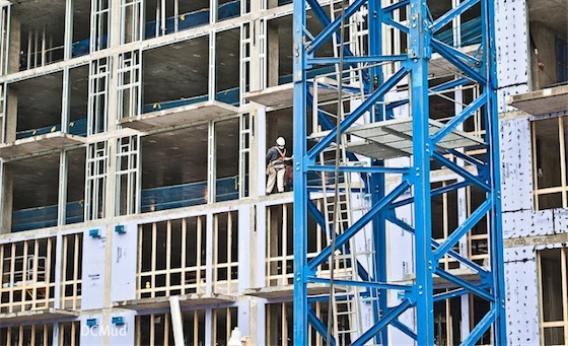Brendan Smith and Jeremy Brecher write about their desire to find environmentally-sound job-creation proposals to counter the Keystone XL jobs pitch. It’s a sophisticated piece that avoids the KXL opponents’ frequent fallacy of dismissing pipeline construction jobs as “temporary” when at the end of the day the life of a construction worker has always been an endless series of temporary jobs:
Where should those proposals come from? As the six labor unions that opposed the KXL pipeline permit pointed out, one source can be the jobs programs that Republican politicians are currently blocking in Congress, like the Restore the American Dream for the 99% Act, which would boost employment by almost 2.3 million jobs in 2012 and almost 3.1 million jobs in 2013; the extension of the Highway Trust Fund, which would create hundreds of thousands of jobs and provide for critical infrastructure repair; and initiatives to fund jobs for teachers, firefighters, and police. It’s time for the environmental movement to put the spotlight on the way climate-denying politicians are crying crocodile tears over a few hundred or thousand jobs while blocking millions of jobs unemployed American workers could be hired to do right now.
Other proposals can come from environmentally friendly projects that also create jobs, like the transition from coal to wind energy now underway in Delaware, or efforts to renew water infrastructure in California.
Make no mistake about it—I support the idea of using additional public funds to undertake additional public sector construction projects right now. That is an excellent idea and we should be doing it. But comparing policy measures to boost construction employment through the use of public expenditure and policy measures to boost construction employment by giving regulatory approval to high return on investment projects is a bit of an apples and oranges comparison. What’s really wanted are examples of other kinds of privately financed construction projects that are ecologically sound. The good news is that there are plenty of examples. The bad news is that federal policy plays a relatively small roll in them. But what you’re looking for is high-density urban structure building.
The photo above is of a building under construction at 2400 14th Street NW here in the District. It’s a pretty big multifamily dwelling and the energy cost of heating the units will, due to the efficiencies inherent in multi-family construction, be substantially less than one a single family detached structure would run you. It’s also near a Metro line, near the city’s most frequent bus service, and walkable to a wide variety of amenities on the 14th Street and U Street corridors. But like basically all DC real estate projects, it won’t be built out to the profit-maximizing height because regulations prohibit the construction of tall buildings. This is precisely the same kind of “jobs” scenario as is at issue with Keystone XL—the private sector wants to finance more building trades employment, but government rules won’t let it—except instead of a fossil fuel pipeline it’s an energy efficient building. And these stories play out all across America. Even amidst a real estate bust, there are still plenty of markets where real estate prices are much higher than the national average and you could make money building tall structures if you were allowed to. And it would be better for the environment to build those structures than to add on more and more sprawl. This is generally a local matter rather than one Congress deals with, but it’s still something people should be mindful of and talk about. And as applied to DC the regulatory barriers are in part federal in nature, and rescinding them is something you could actually imagine Republican members of Congress being interested in if they were educated about it.
